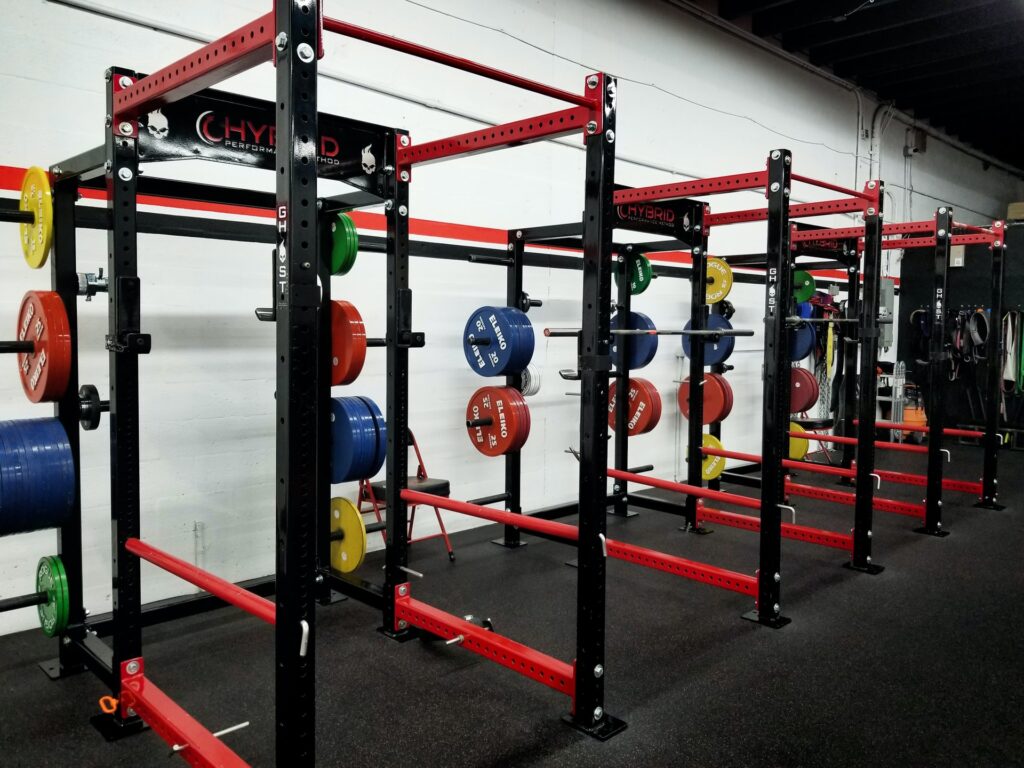Greetings, fitness enthusiasts! Today, we’re going to dive into the world of isometric training and explore the benefits of static holds. As you may know, isometric training involves holding a static position rather than performing dynamic movements. Static holds can be used to target specific muscle groups and can be an effective way to overload your central nervous system (CNS).
In this article, we’ll discuss how static holds work and the benefits they provide. We’ll also cover some popular static hold exercises and provide tips on how to incorporate them into your workout routine.
If you’re looking for a new way to challenge your body and take your training to the next level, static holds may be just what you need. So, get ready to push your limits and overload your CNS with isometric training!
A static hold – What is it?
Static holds are a great way to overload your CNS, familiarise your body with heavy weights and increase your strength levels when you get to the advanced stage and everything else seems to stop working. Exposing your body to supramaximal weights is a great overload tool and applied correctly, can drastically change the outcome of your training routine. Be aware though, static holds need to be applied wisely, otherwise, they will serve no function. As usual, you need to know what are you actually training for and how are you going to use a specific method to get a specific outcome. In this article, I will explain how I use this particular overload method to train my athletes.
How do static holds differ from overcoming isometrics?
Ain’t no doubt about it – isometric training is the real deal when it comes to building strength and size. And within that realm, there are two types of isometric training that often get confused: static holds and overcoming isometrics. Now, I’m gonna break it down for you real simple so you can understand the differences and use them to your advantage.
Static holds are when you hold a position for an extended period of time. This can be a plank hold, wall sit, bench press hold, squat walkout and hold, or any other exercise where you hold a position and engage your muscles without movement. Static holds are great for building endurance and activating muscle fibers that may not be targeted during traditional exercises. They’re also a great way to overload your central nervous system and make your muscles work harder.
Overcoming isometrics, on the other hand, are when you push or pull against an immovable object or an object with so much resistance that it cannot be moved. This can be pushing against a wall, pulling against a heavy barbell, or any other exercise where you’re pushing or pulling against something that can’t be moved. Overcoming isometrics are great for building explosive strength and power, as well as increasing muscle activation and recruitment.
So, to sum it up – static holds are all about holding a position and engaging your muscles while overcoming isometrics are all about pushing or pulling against an immovable object or resistance. Both types of isometric training have their place in a well-rounded training program, and can be used to target different aspects of strength and muscle development.
So, next time you’re hitting the gym, don’t get confused and remember – whether you’re holding a static position or pushing against an immovable object, just remember that isometric training is the key to unlocking your full strength potential.
Overload
Overloading the central nervous system can be of great help assuming you know what you are doing. Unfortunately, many adepts do training overload in the wrong way which leads to a lack of gains and more neural fatigue. Speaking of CNS overload, it is NOT the same thing as progressive overload. That in turn, might be the cause of diminishing sports performance. When you implement a new technique into your routine, you typically want it to increase, not decrease the performance. If upon adding an additional exercise or technique, you find it to be detrimental to your athletes, you know that you have done it in an incorrect manner. Before we move on, I want you to understand that even water can be a poison to your body depending on the quantity consumed. Be aware that even the best training methods might hinder the growth of your athletes if you use them incorrectly or abuse them.
When is the right time?
When and if should you actually use them is the question. This training method is very beneficial for advanced athletes but intermediates can also utilise it with great success. If your athletes are beginners, then I don’t see the point as they will be gaining strength at a fast pace anyway and I recommend saving this technique for later. The first thing I want to mention is that you want to program static holds with supramaximal weights when you want to overload your CNS ideally when the conventional methods stop working. As the name suggests, it is an overload strategy so you want to expose your body to a bigger-than-usual stimulus in order to continue adapting to the stressors and be able to carry on increasing your strength levels. To give you an example, it could be at the end of your macrocycle, that is just before the competition or as an alternative to another overload technique, for instance, the isometrics. Upon completing all the “boring” work, you are welcome to play around and that is when you apply the overload strategies to accustomise your central nervous system to an extraordinary stimulus. By doing so, you will force your CNS to adapt, activate it and allow it to express its true potential.
Training intensity
In order to achieve a training transfer, your training must be specific. You must use a similar exercise, for a similar amount of sets and reps, utilise a similar type of contraction, and use a similar intensity. Upon consulting Josh Bryant, I have found that using too much weight can be detrimental to an athlete’s performance in a similar way to not using enough weight. When you overload your CNS (assuming you want the exercise to transfer to the main lift) you are to use only 5-10% more than your true 1rm. That means 105-110% would be enough. Anything more than that and you will be training static holds for the sake of getting better at statically holding a supramaximal weight without moving it an inch. The reason you program this exercise for your athletes is to give them a bit more weight than they are used to handle and trigger a neurological response that actually transfers to the main lifts. The transfer is what you are about, not using as much weight as you can because it will only add more stress and make your routine harder to recover from.
Static hold exercises
Are you looking to take your training to the next level? Look no further than isometric training with static holds. Static holds are a great way to overload your central nervous system (CNS) and activate muscle fibers that may not be engaged during traditional exercises. In this section, we’ll explore some of the best static hold exercises to help you achieve your fitness goals.
- Bench Press Hold: The bench press hold is a great way to increase your bench press strength and activate your chest, triceps, and shoulders. To perform the bench press hold, start by lifting the weight off the rack and holding it in the top position for as long as you can. This exercise will help you develop the strength and stability needed for a powerful bench press.
- Parallel Squat Hold: The squat hold is an excellent way to improve your lower body strength and endurance. To perform the squat hold, start by squatting down until your thighs are parallel to the ground and hold that position for as long as you can, then let your spotters help you get up (if you are doing multiple sets) or squat down and let the bar rest on the safety pins (if you’re doing just a single set). This exercise targets your quads, hamstrings, glutes, and core, making it a great overall lower-body exercise.
- Above-The-Knee Rack Pull with a Hold: The above-the-knee rack pull with a hold is a great way to increase your deadlift strength and target your back, traps, and forearms. To perform this exercise, set up a barbell on the rack just above your knees and pull the weight up to the hold position. Hold the weight for as long as you can, engaging your back muscles to maintain your posture.
- Overhead Barbell Static Hold: The overhead barbell static hold is an excellent exercise for improving your shoulder and core strength. To perform this exercise, the barbell can be placed on highly-mounted safety pins within the squat rack. You have to get under it, lift it just an inch or two off the pins, and simply hold the barbell overhead for as long as you can, engaging your core and shoulder muscles to maintain stability.
In summary, static hold exercises are an effective way to overload your CNS and activate muscles that may not be engaged during traditional exercises. The bench press hold, squat hold, above-the-knee rackpull with a hold, and overhead barbell static hold are just a few examples of the many static hold exercises that can help you achieve your fitness goals. So, challenge your body, push your limits, and experience the benefits of isometric training with static holds.
How does it work?
By using more weight than you usually handle, you force your body to adapt to the environment. Since you are already desensitized to conventional methods, this once should help you overcome the stress threshold required to keep making gains. It will force your body to recruit the biggest motor units while holding the weight, thus making it easier to activate them later, when you are to press such weight. It could be compared to progressive distance training, except here, we are expecting the transfer straight from the static hold to the full range of motion without lengthening the ROM gradually so we are skipping the transition phase and focusing solely on overloading the CNS.
Although static holds are an excellent training tool, you must be careful not to overdo it. This means, you have to find the right balance in your training system. If you want to find out how to correctly measure sports performance and optimise your training system, read this article.




